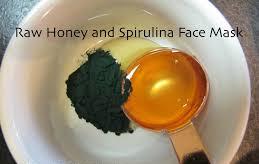
Spirulina is a genus of blue-green algae used as a nutritional supplement. Blue-green algae, which are microscopic fresh-water organisms, are also known as cyanobacteria. Their color is derived from the green pigment of chlorophyll, and the blue from a protein called phycocyanin. The species most commonly recommended for use as a nutritional supplement are Spirulina maxima and Spirulina platensis. These occur naturally in warm, alkaline, salty, brackish lakes, but are also commonly grown by aquaculture and harvested for commercial use. Spirulina contains many nutrients, including B vitamins, beta-carotene, gamma-linolenic acid, iron, calcium, magnesium, manganese, potassium, selenium, zinc, bioflavonoids , and protein.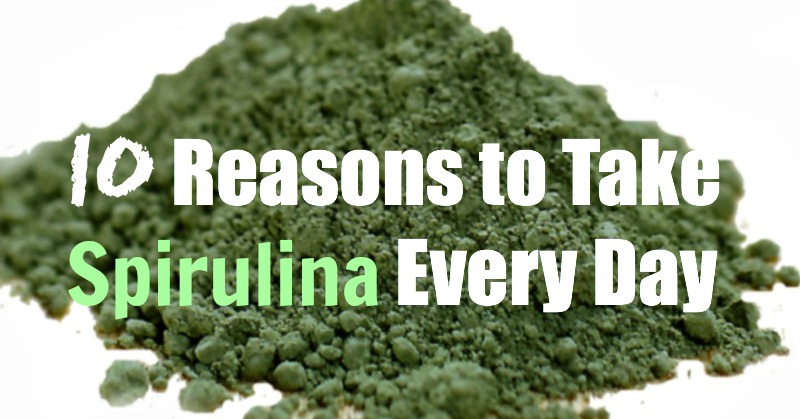
Spirulina is about 65% protein by composition. These proteins are complete, in that they contain all essential amino acids , plus some nonessential ones. In that regard, it is similar to animal protein, but does not contain saturated fats, or residues of hormones or antibiotics that are in some meats. Since spirulina is normally taken in small amounts, the quantity of dietary protein supplied for the average reasonably well-nourished person would not be significant. However, it is a good source of trace minerals, some vitamins, bioflavonoids, and other phytochemicals. It also has high digestibility and bioavailability of nutrients.

Spirulina is a genus of blue-green algae used as a nutritional supplement. Blue-green algae, which are microscopic fresh-water organisms, are also known as cyanobacteria. Their color is derived from the green pigment of chlorophyll, and the blue from a protein called phycocyanin. The species most commonly recommended for use as a nutritional supplement are Spirulina maxima and Spirulina platensis. These occur naturally in warm, alkaline, salty, brackish lakes, but are also commonly grown by aquaculture and harvested for commercial use. Spirulina contains many nutrients, including B vitamins, beta-carotene, gamma-linolenic acid, iron, calcium, magnesium, manganese, potassium, selenium, zinc, bioflavonoids , and protein.

Spirulina is about 65% protein by composition. These proteins are complete, in that they contain all essential amino acids , plus some nonessential ones. In that regard, it is similar to animal protein, but does not contain saturated fats, or residues of hormones or antibiotics that are in some meats. Since spirulina is normally taken in small amounts, the quantity of dietary protein supplied for the average reasonably well-nourished person would not be significant. However, it is a good source of trace minerals, some vitamins, bioflavonoids, and other phytochemicals. It also has high digestibility and bioavailability of nutrients.
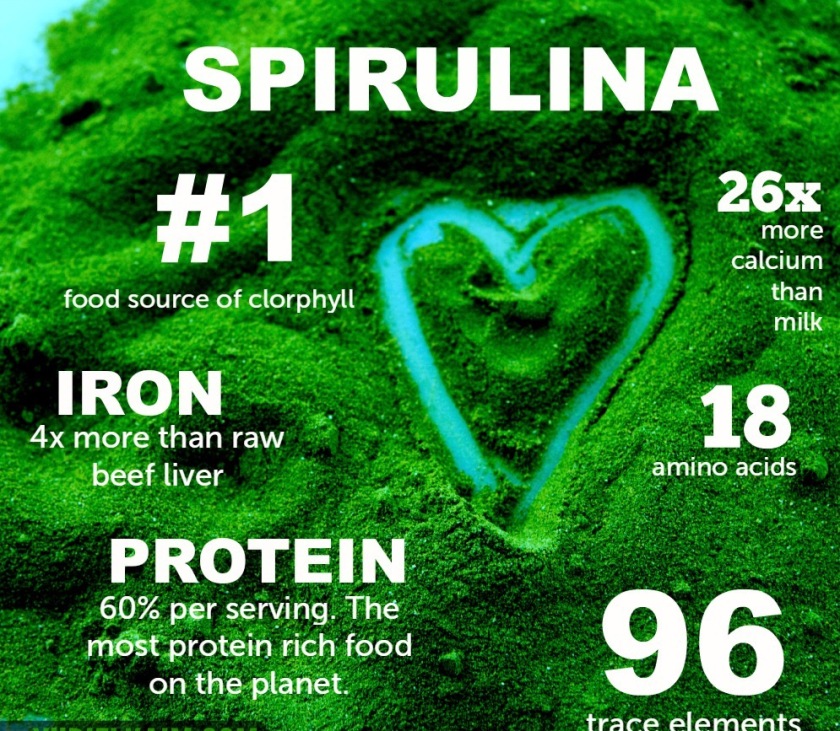
General use
Spirulina has been used as a source of protein and nutrients, particularly beta-carotene, by the World Health Organization (WHO) to feed malnourished Indian children. The program resulted in a decrease of a type of blindness that results from inadequate dietary vitamin A . The dose used in this year-long study was 1 gram per day.
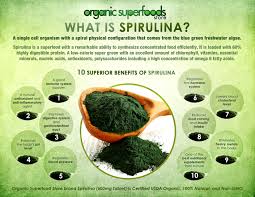
There is a high vitamin B12 content in spirulina. For this reason, it has often been recommended as a supple-mental source of the vitamin for vegans and other strict vegetarians, who are unlikely to have adequate dietary vitamin B12. Unfortunately, spirulina is not an effective source of the usable vitamin. Much of the vitamin B12 is in the form of analogs that are unusable for humans, and may even block the active forms of vitamin B12 consumed from other sources. 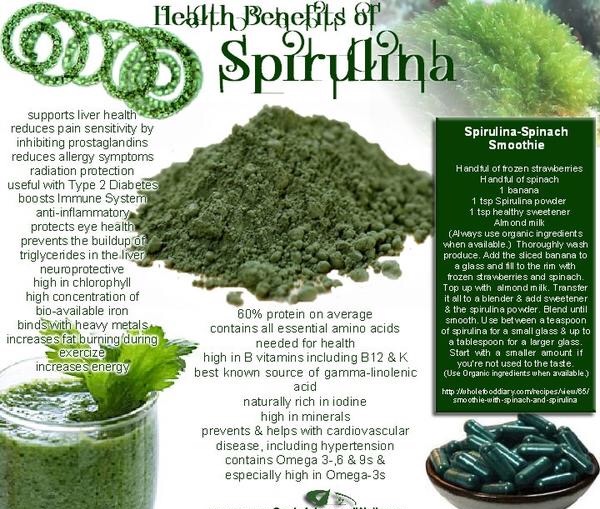
Gamma linolenic acid (GLA) is present in significant amounts in a small percent of spirulina species. This essential fatty acid can be used in the body to form products that are anti-inflammatory and antiproliferative. It is potentially useful for individuals with rheumatoid arthritis and diabetic neuropathy. It may also play a role in lowering plasma triglycerides and increasing HDL cholesterol .
Spirulina is a good source of available iron and zinc. A study done in rats found that those consuming spirulina had equivalent or better absorption than those given a ferrous sulfate iron supplement. A small human study of iron-deficient women had good response to iron supple-mentation with spirulina, although the amounts used were large (4 grams after each meal). Similarly, a study of zinc deficient children found that those taking spirulina had a superior response to those taking zinc sulfate, and had fewer side effects.

In addition to serving as a source of nutrients itself, spirulina has been used in the manufacture of fermented dairy products to guarantee the survival of the bacteria used to ferment the milk.
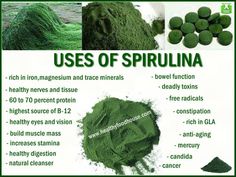
A stronger immune system is one claim made by boosters of spirulina. A number of animal studies appear to support stimulation of both antibody and cellular types of immunity. Immune function was markedly improved in children living in the areas surrounding Chernobyl. The measurements were made after 45 days, with each child consuming 5 grams of spirulina per day.
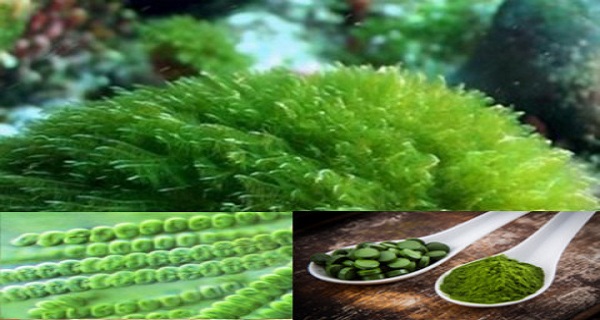
The growth of beneficial intestinal bacteria, including Lactobacillus, appears to be stimulated by the consumption of spirulina, based on a study of rats who consumed it as 5% of their diets . The absorption of vitamin B1 was also improved.

Cholesterol, serum lipids, and low-density lipoprotein (LDL) cholesterol may be lowered by a small but significant percentage by the consumption of spirulina. One study group of men with high cholesterol took 4.2 grams per day of spirulina, and experienced a 4.5% decrease in cholesterol after one month.
Spirulina is also thought to be helpful in the treatment of oral leukoplakia, a precancerous condition that is manifested as white patches in the mouth. It improves experimentally induced oral carcinoma (cancer in the mouth) as supported by studies done in animals.
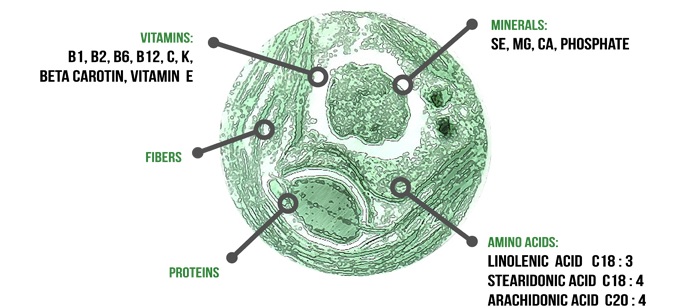
The evidence for the ability of spirulina to promote weight loss is not very strong. Results have been mixed, and the phenylalanine content does not appear to be an appetite suppressant as is sometimes claimed. Whether other components of the algae are beneficial for weight loss is uncertain and unproven.
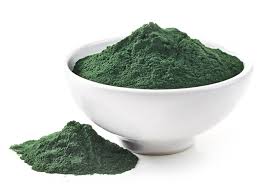
Spirulina has been recommended to alleviate the symptoms of attention-deficit hyperactivity disorder (ADHD), although evidence for this indication is lacking.
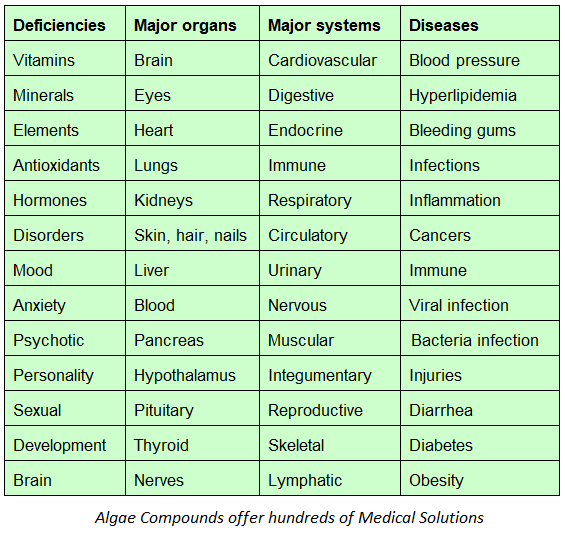
Spirulina has the highest concentration of evercetin found in a natural source. Evercetin is a potent antioxidant and anti-inflammatory compound that can be used to alleviate the symptoms of sinusitis and asthma . Phycocyanin, the protein that gives spirulina its blue color, has also been shown to relieve inflammation associated with arthritis and various allergies .
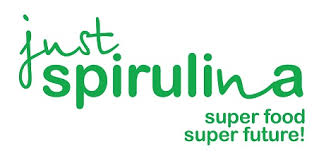 One recommended dose is 3–5 grams per day, but the amount used may depend on the product, the individual
One recommended dose is 3–5 grams per day, but the amount used may depend on the product, the individual 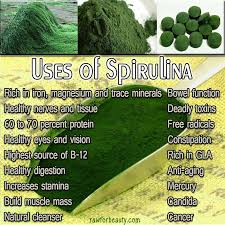 using it, and the indication for which it is being taken.
using it, and the indication for which it is being taken.
Preparations
Spirulina supplements are available in powder, flake, capsule, and tablet form. These supplements are generally expensive and have a strong flavor that many people find unpleasant.
Precautions
Because spirulina is sensitive to pollutants in sea water, it can be used as a biosensor to measure the toxicity of a given body of water. Unfortunately, this sensitivity means that spirulina grown in water contaminated with heavy metals can concentrate these toxic substances. Mercury levels are of particular concern. Infectious organisms may also be present and contaminate harvested algae, so reputable sources of spirulina should be used.
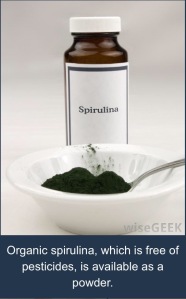
Phenylketonurics should avoid spirulina due to the potential content of phenylalanine.
A number of varieties of blue-green algae, including Aphanizomenon flos-quae and Anabaena, have been found to sometimes produce toxins that may affect the nervous system or the liver.
Purchasing Spirulina

I would reccomend buying an organic spirulina, which is free of pesticides to limit contimination and side effects. Available online or local health shops. Amaon.com, Amazon.co.uk have a range of Spirulina Power and tablets

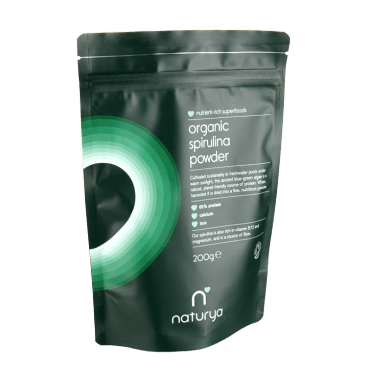
The potential side effects of spirulina are primarily gastrointestinal, and include diarrhea, nausea , and vomiting . Allergic reactions occur rarely, but can cause insomnia and anxiety
Spirulina Recipes
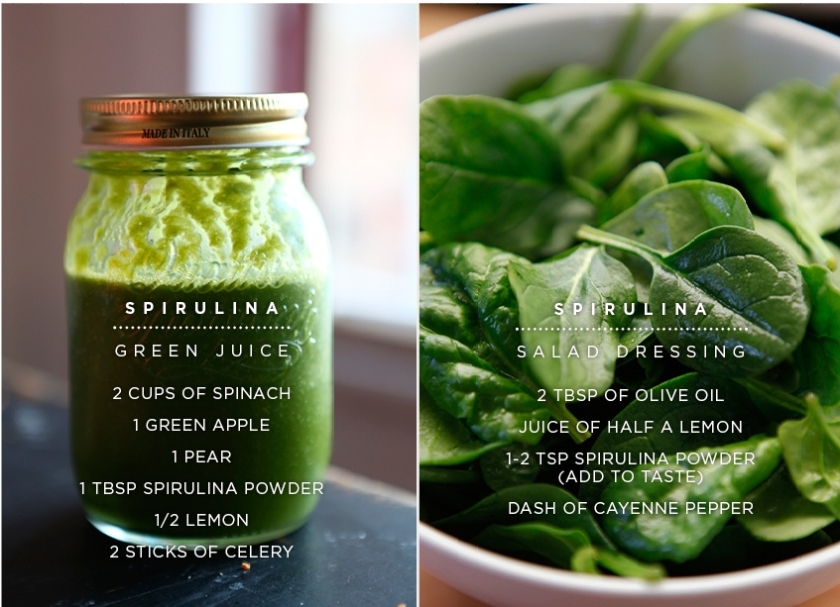

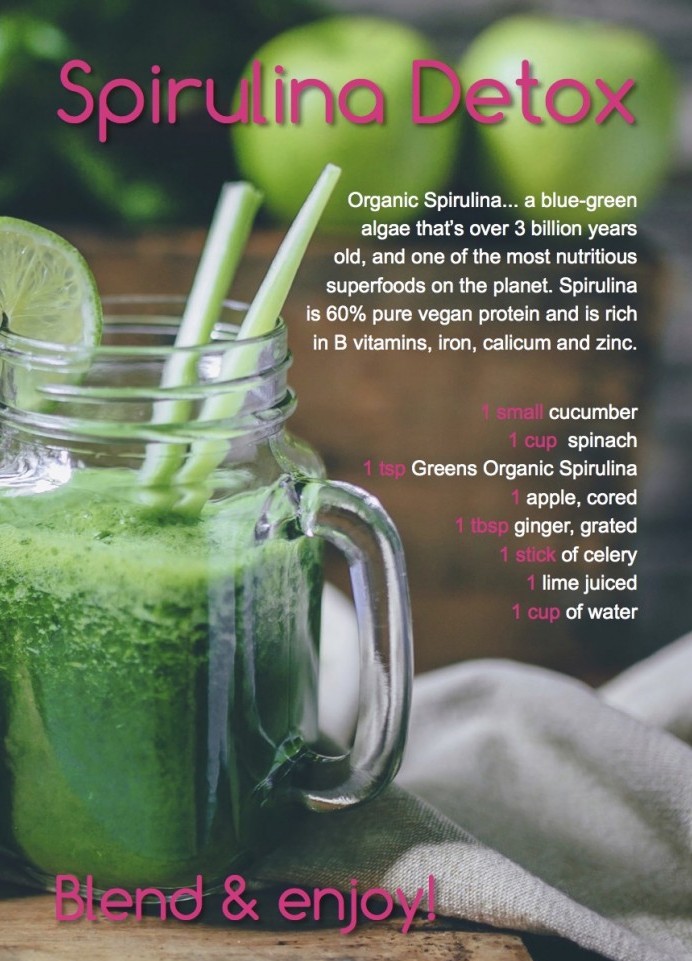
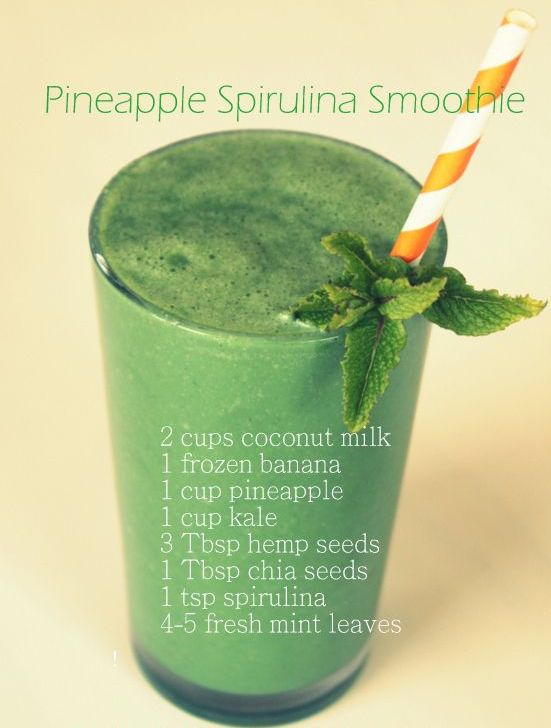

Different Ideas
DIY |Face Masks
Give your face a treat by switching to our homemade superfood masks. Get beautiful, calm, gleaming skin!
This superfood green Spirulina powder is:
- a fantastic source of antioxidants
- helps your skin retain moisture
- smooths and exfoliates
- helps to eliminate bad bacteria that can cause acne
- contains chlorophyll which is super cleansing
- Discover what type of support your skin needs
- Make your own face masks with ingredients from your kitchen
- Say goodbye dull, irritated, dry and problematic skin
 Facing the modern world means a daily onslaught of pollution, chemicals and air conditioning. It’s no wonder we spend money on impressive-sounding skin treatments, that peel, scrub and clarify our skin.
Facing the modern world means a daily onslaught of pollution, chemicals and air conditioning. It’s no wonder we spend money on impressive-sounding skin treatments, that peel, scrub and clarify our skin.

BUT: Many facial products contain perfume, alcohol, parabens, synthetic colours and preservatives that your skin absorbs and can cause health problems. Our superfood facemasks are the perfect alternative because they contain no nasties. Instead, you get all the amazing vitamins, minerals, essential fats, protein and enzymes straight into your skin, for real and lasting benefits.
INTRODUCING THE ORGANIC BURST SUPERFOOD MASKS
DIY | Spirulina Clarifier
Cleansing & Tightening – Perfect if you have oily skin or wear heavy make-up.
This is the most fuss-free recipe imaginable with only 2 ingredients! Our pure, organic 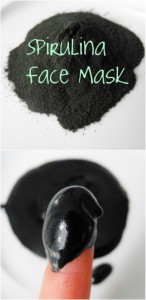 spirulina absorbs water, so it can cleanse the pores brilliantly. It is also a wonderful source of the powerful pigment beta-carotene. If you have very sensitive skin, simply replace spirulina with Organic Burst Wheatgrass, or try adding 1tbsp natural organic yoghurt to cool.
spirulina absorbs water, so it can cleanse the pores brilliantly. It is also a wonderful source of the powerful pigment beta-carotene. If you have very sensitive skin, simply replace spirulina with Organic Burst Wheatgrass, or try adding 1tbsp natural organic yoghurt to cool.
Ingredients:
- 2 tsp Organic Spirulina powder
- Filtered water
Put the spirulina in a bowl and gradually add enough water to make a paste. Spread over the face – use the back of a spoon or your fingers. Leave for 15 mins or longer. If your skin on the shoulders and chest need some attention, spread it over these areas too!
“Treat your face to a simple clarifying mask with Spirulina, a great pore cleanser!”
DIY | Spirulina and Honey Face Mask
Ingredients:
- Organic Spirulina Powder
- Raw Honey
Directions:
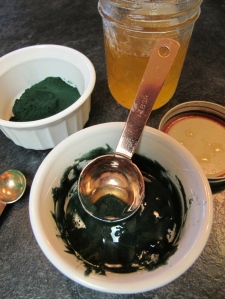 Mix together one tablespoon of Spirulina and one tablespoon of Raw Honey. Stir really well in a bowl until the consistency is creamy. Spread all over your face either using your fingers or a foundation brush (I find that using a foundation brush helps to apply the mixture more evenly). Leave on for 20-45 mins. Wash with warm water and feel the difference in your skin!! I do this mask once or twice a week and absolutely love the results.
Mix together one tablespoon of Spirulina and one tablespoon of Raw Honey. Stir really well in a bowl until the consistency is creamy. Spread all over your face either using your fingers or a foundation brush (I find that using a foundation brush helps to apply the mixture more evenly). Leave on for 20-45 mins. Wash with warm water and feel the difference in your skin!! I do this mask once or twice a week and absolutely love the results.
Other DIY Organic Spirulina powder face mask ideas
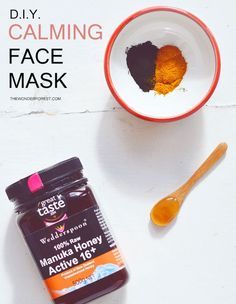
This potent manuka honey especially great for:
- Healing acne and scarring
- Fighting skin infections
- Cleaning pores while naturally exfoliating
- Helping skin to retain moisture
- Rejuvenating radiance and softness
Interactions
No interactions of spirulina with foods, conventional medications, or herbs have been documented as of 2002.
![Historical use[edit] Spirulina was a food source for the Aztecs and other Mesoamericans until the 16th century; the harvest from Lake Texcoco and subsequent sale as cakes were described by one of Cortés' soldiers.[54][55] The Aztecs called it "tecuitlatl".[47] Spirulina was found in abundance at Lake Texcoco by French researchers in the 1960s, but no reference to its use was made by the Aztecs as a daily food source after the 16th century, probably due to the draining of the surrounding lakes for agricultural and urban development.[4][47] The topic of the Tecuitlalt, which was earlier discovered in 1520, was not mentioned again until 1940, the French phycologist Pierre Dangeard mentioned about a cake called “dihe”, consumed by Kanembu tribe, African Lake Chad, Kanem (Chad, Africa). Dangeard studied the “dihe” samples and found that it is like a puree of spring form blue algae. Spirulina has also been traditionally harvested in Chad. It is dried into dihé, which are used to make broths for meals, and also sold in markets. The spirulina is harvested from small lakes and ponds around Lake Chad.[56] During 1964 and 1965, the botanist Jean Leonard, during his Belgian Trans-Sabaran Expedition, confirmed that dihe is made up of Spirulina and thus chemical analysis was started on Spirulina. During that time, Léonard received a request from Sosa-Texcoco Ltd, Mexico to study a bloom of algae in their sodium hydroxide production facility. As a result, the first systematic and detailed study of the growth requirements and physiology of Spirulina was performed. This study, which was a part of Ph.D. thesis by Zarrouk (1966) [57] was the basis for establishing the first large-scale production plant of Spirulina.[15] Spirulina, in 1967 was established as a “wonderful food source” by the International Association of Applied Microbiology.[15] The first large-scale spirulina production plant, run by Sosa Texcoco, was established there in the early 1970s.[1]](https://dailyhealthyremedies.files.wordpress.com/2016/04/a1-spirulina-3.jpg?w=840)
The potential side effects of spirulina are primarily gastrointestinal, and include diarrhea, nausea , and vomiting . Allergic reactions occur rarely, but can cause insomnia and anxiety
Resources
BOOKS
Bratman, Steven, and David Kroll. Natural Health Bible. Rocklin, CA: Prima Publishing, 1999.
Griffith, H. Winter. Vitamins, Herbs, Minerals & supplements: the complete guide. New York: Fisher Books, 1998.
Jellin, Jeff, Forrest Batz, and Kathy Hitchens. Pharmacist’s Letter/Prescriber’s Letter Natural Medicines Comprehensive Database. California: Therapeutic Research Faculty, 1999.
OTHER
EarthNet. EarthNet Scientific Health Library. http://www.spirulina.com/SPLAbstracts1.html (2000).
Earthrise. Spirulina Library Abstracts and Summaries. http://www.earthrise.com/ERLibAbstracts2.html (2000).
Mayo Clinic. Mayo Clinic: Blue-green algae. http://www.mayohealth.org/mayo/askdiet/htm/new/qd970618.htm (1997).
















